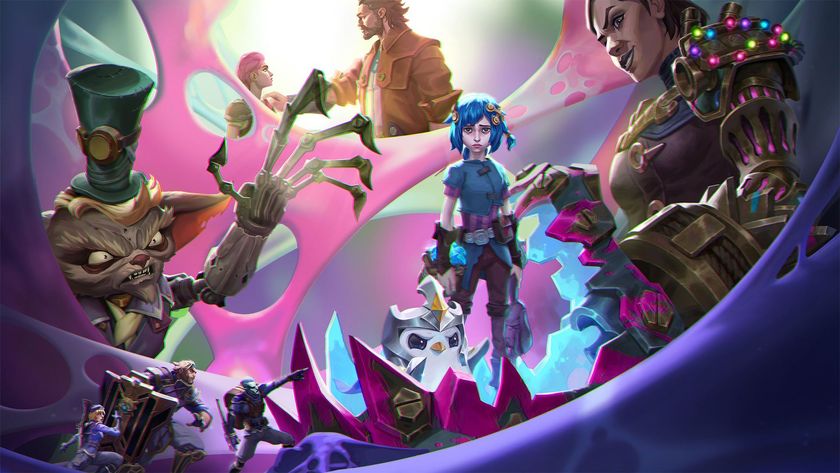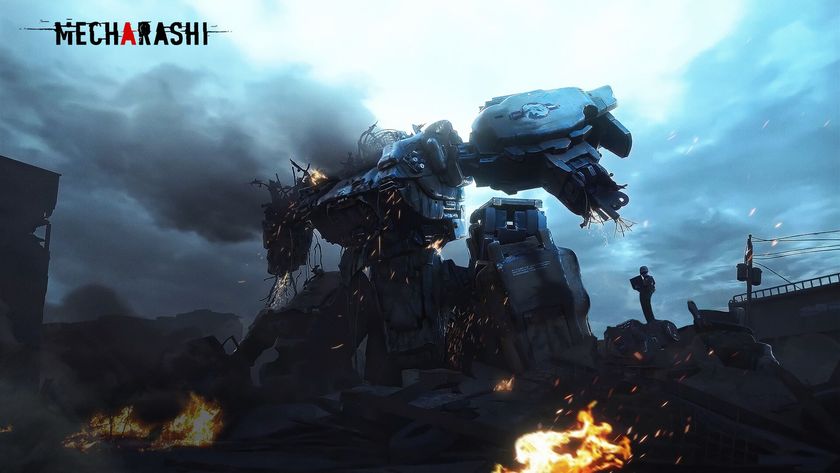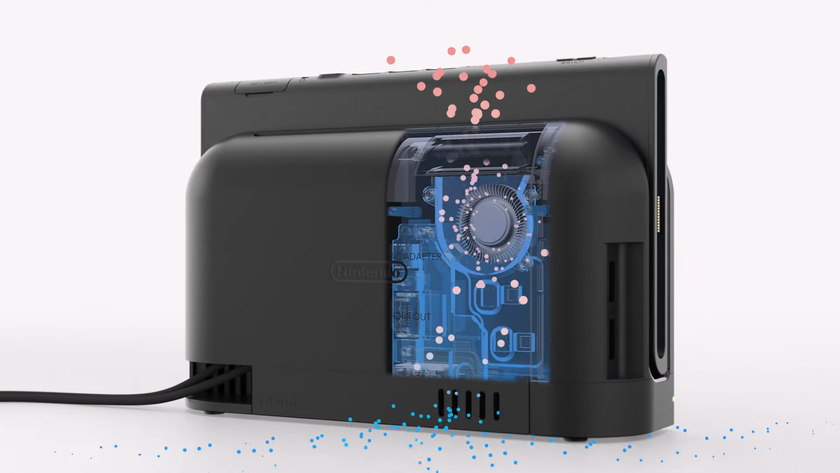Mario + Rabbids Sparks of Hope leaves XCOM behind to go interstellar
Big in 2022: If you like your sequels brave and littered with bob-ombs, then Ubi’s new take on turn-based tactics is for you
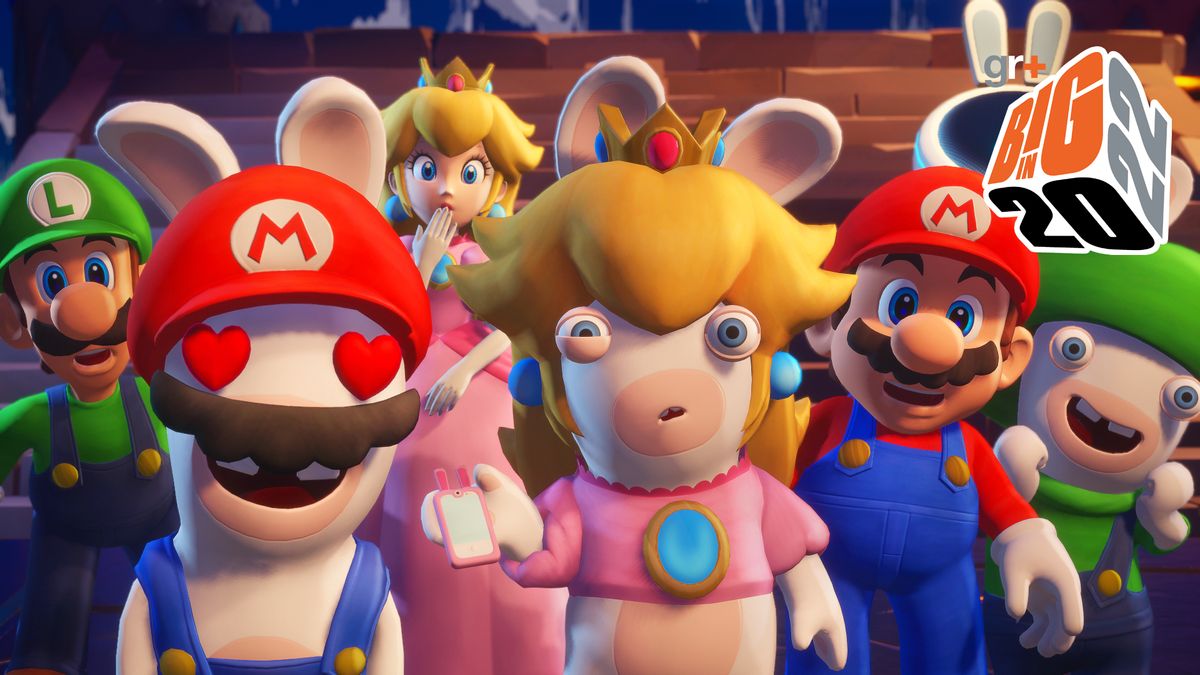
When Mario + Rabbids Kingdom Battle leaked ahead of its E3 reveal, slides from an internal Ubisoft presentation made it out into the wild. There, in the publisher’s pre-release plans, was a month dedicated to one job: “convince media/gamers”.
If Ubisoft was worried that Mario fans might take some coaxing to accept its new vision of Peach as a snaggle-toothed selfie obsessive with a passing resemblance to Homer Simpson, the concern proved well-founded. The leaked art provoked a backlash, as Nintendo devotees tried and failed to wrap their heads around the sight of their iconic plumber toting a blaster.
Yet, with a goomba-assisted frontflip, Ubisoft Milan stuck the landing – following XCOM into a newly-created mainstream market for turn-based tactics, while advancing the formula with a creative combo system for chaining hops, skips and jumps. Crucially, Kingdom Battle paid due respect to Miyamoto and co., with a mischievous sense of humour that prevented Ubi from being crippled by the conservatism that often comes with an excess of reverence.
Soliani power

Game Mario + Rabbids Sparks of Hope
Developer Ubisoft Milan
Publisher Ubisoft
Platforms Nintendo Switch
Release 2022
After the stress of pitching and pulling off the new, you could forgive creative director David Soliani and team for falling into a more iterative model, working from the grid they’d already laid for their battlefields. Instead, they’ve literally thrown out that grid, turning fights into free-roaming affairs for the first time.
“We were aspiring to push the tactical boundaries even more,” Soliani told IGN last summer. “To provide a completely renewed combat system to our players. So we basically redesigned the old combat system with a focus on fluidity and the action offered by the possibility to move the heroes in real-time.”
The new system bears a superficial resemblance to Baldur’s Gate 3, with player-controlled characters pottering in whatever direction they please, so long as they don’t exceed their movement allowance for the turn. But there’s a clear influence from the 3D Mario platformers, as well, in the uninterrupted flow and buoyancy of that movement. Watch Mario hop over a low wall and slide-kick a cursed Rabbid without once breaking his stride or denying the player control. Witness Rabbid Peach drop her phone for long enough to sprint across her allotted area, scoop up a bob-omb, and then fling the flashing orb into enemy territory before its explosive countdown ends. It’s this complex but intuitive mix of real-time and turn-based elements that makes Sparks of Hope uniquely alluring within its traditionally fusty genre.
Into that category-blending broth, add a sprinkle of JRPG drama. That comes courtesy of the Sparks themselves, sentient little stars with potential for volatile power. In early gameplay footage, Mario was seen to call on one fiery Spark like a Final Fantasy summon. When triggered, the smirking creature rode its personal cloud high into the sky, stirring up a swirling vortex which rained fireballs down onto the battlefield below. These abilities aren’t pure spectacle: Ubisoft says they can change the course of a fight.
Sign up to the 12DOVE Newsletter
Weekly digests, tales from the communities you love, and more
Mario veterans of a certain age may recognise the Sparks as the Luma of Super Mario Galaxy – albeit infected with a dose of uninhibited Rabbid energy. That’s an indication of Ubisoft’s key reference points for this game, and the worlds you can expect to visit during its interplanetary journey. If you were to construct a playing list of games to rattle through in anticipation of Sparks of Hope, it would consist of both Galaxy games – as well as Kingdom Battle’s DLC, Donkey Kong Adventure. That’s where the concept for more freeform battles first originated, in the muscular form of DK himself.
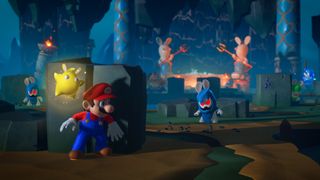
"Sparks of Hope sees Mario + Rabbids disappear so far down its own pipe that its original inspirations are no longer visible. That’s good news for the health of strategy gaming"
The lack of stricture extends to the overworld, too. Where in Kingdom Battle you’d steer your party around a fairly linear set of paths, you’ll now be exploring open levels, teasing out secrets stuffed in the shadow of creepy lighthouses, or out in a blizzard-blasted tundra (there’s at least one cave entrance to spot in last year’s gameplay sneak peak trailer). Mario + Rabbids’ new galactic scale doesn’t mean it’ll be exclusively space-y – the reveal footage featured a Greek-inspired island, replete with Santorini-style roof domes and fat seagulls. You can find extra allies out in the world, solve mysteries, deal with Rabbid nonsense, and, only when an enemy surprises the party, be whisked away to an appropriately-dressed arena to do battle.
Ubisoft has promised plenty of planets, each one radically different from the last – a feat made possible by the expansion of the Mario + Rabbids development team, now triple that of Kingdom Battle. Soliani has said he doesn’t view Sparks of Hope as a follow-up, so much as a whole new take on the tactical genre.
This year will mark a decade since the release of XCOM: Enemy Unknown, and it’s heartening to see that real money is still being pumped into Western turn-based tactics. What’s more, between Ubisoft and Firaxis’s Midnight Suns, it’s evident the leading lights of the genre intend to keep pushing at its limits. Sparks of Hope sees Mario + Rabbids disappear so far down its own pipe that its original inspirations are no longer visible. That’s good news for the health of strategy gaming, and for those who like a little surprise in their sequels.

12DOVE is diving deep into the biggest games of the new year with exclusive interviews, hands-on impressions, and in-depth editorials. For more, be sure to follow along with Big in 2022.
Jeremy is a freelance editor and writer with a decade’s experience across publications like GamesRadar, Rock Paper Shotgun, PC Gamer and Edge. He specialises in features and interviews, and gets a special kick out of meeting the word count exactly. He missed the golden age of magazines, so is making up for lost time while maintaining a healthy modern guilt over the paper waste. Jeremy was once told off by the director of Dishonored 2 for not having played Dishonored 2, an error he has since corrected.

